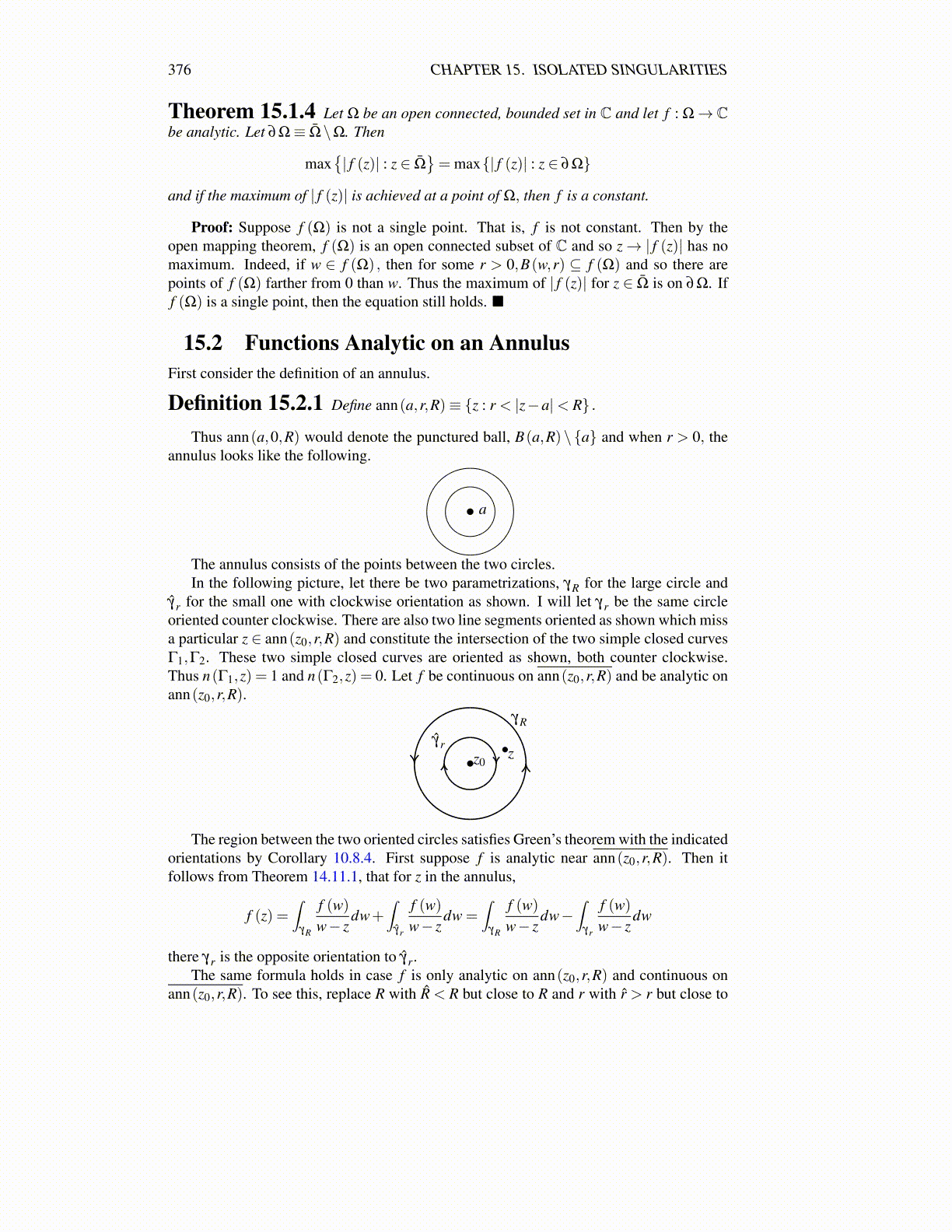
376 CHAPTER 15. ISOLATED SINGULARITIES
Theorem 15.1.4 Let Ω be an open connected, bounded set in C and let f : Ω→ Cbe analytic. Let ∂Ω≡ Ω̄\Ω. Then
max{| f (z)| : z ∈ Ω̄
}= max{| f (z)| : z ∈ ∂Ω}
and if the maximum of | f (z)| is achieved at a point of Ω, then f is a constant.
Proof: Suppose f (Ω) is not a single point. That is, f is not constant. Then by theopen mapping theorem, f (Ω) is an open connected subset of C and so z→ | f (z)| has nomaximum. Indeed, if w ∈ f (Ω) , then for some r > 0,B(w,r) ⊆ f (Ω) and so there arepoints of f (Ω) farther from 0 than w. Thus the maximum of | f (z)| for z ∈ Ω̄ is on ∂Ω. Iff (Ω) is a single point, then the equation still holds. ■
15.2 Functions Analytic on an AnnulusFirst consider the definition of an annulus.
Definition 15.2.1 Define ann(a,r,R)≡ {z : r < |z−a|< R} .
Thus ann(a,0,R) would denote the punctured ball, B(a,R) \ {a} and when r > 0, theannulus looks like the following.
a
The annulus consists of the points between the two circles.In the following picture, let there be two parametrizations, γR for the large circle and
γ̂r for the small one with clockwise orientation as shown. I will let γr be the same circleoriented counter clockwise. There are also two line segments oriented as shown which missa particular z ∈ ann(z0,r,R) and constitute the intersection of the two simple closed curvesΓ1,Γ2. These two simple closed curves are oriented as shown, both counter clockwise.Thus n(Γ1,z) = 1 and n(Γ2,z) = 0. Let f be continuous on ann(z0,r,R) and be analytic onann(z0,r,R).
γR
γ̂rzz0
The region between the two oriented circles satisfies Green’s theorem with the indicatedorientations by Corollary 10.8.4. First suppose f is analytic near ann(z0,r,R). Then itfollows from Theorem 14.11.1, that for z in the annulus,
f (z) =∫
γR
f (w)w− z
dw+∫
γ̂r
f (w)w− z
dw =∫
γR
f (w)w− z
dw−∫
γr
f (w)w− z
dw
there γr is the opposite orientation to γ̂r.The same formula holds in case f is only analytic on ann(z0,r,R) and continuous on
ann(z0,r,R). To see this, replace R with R̂ < R but close to R and r with r̂ > r but close to